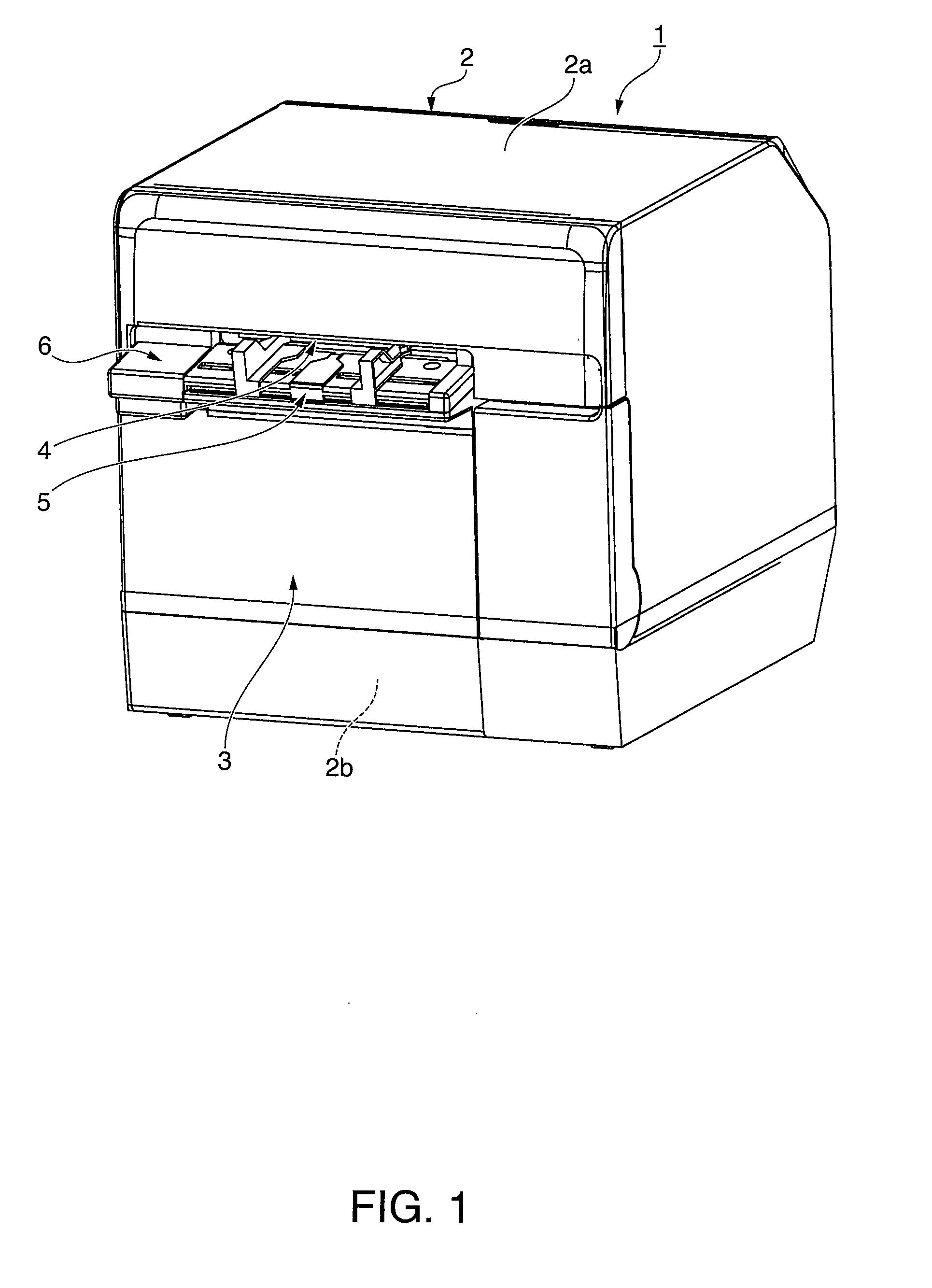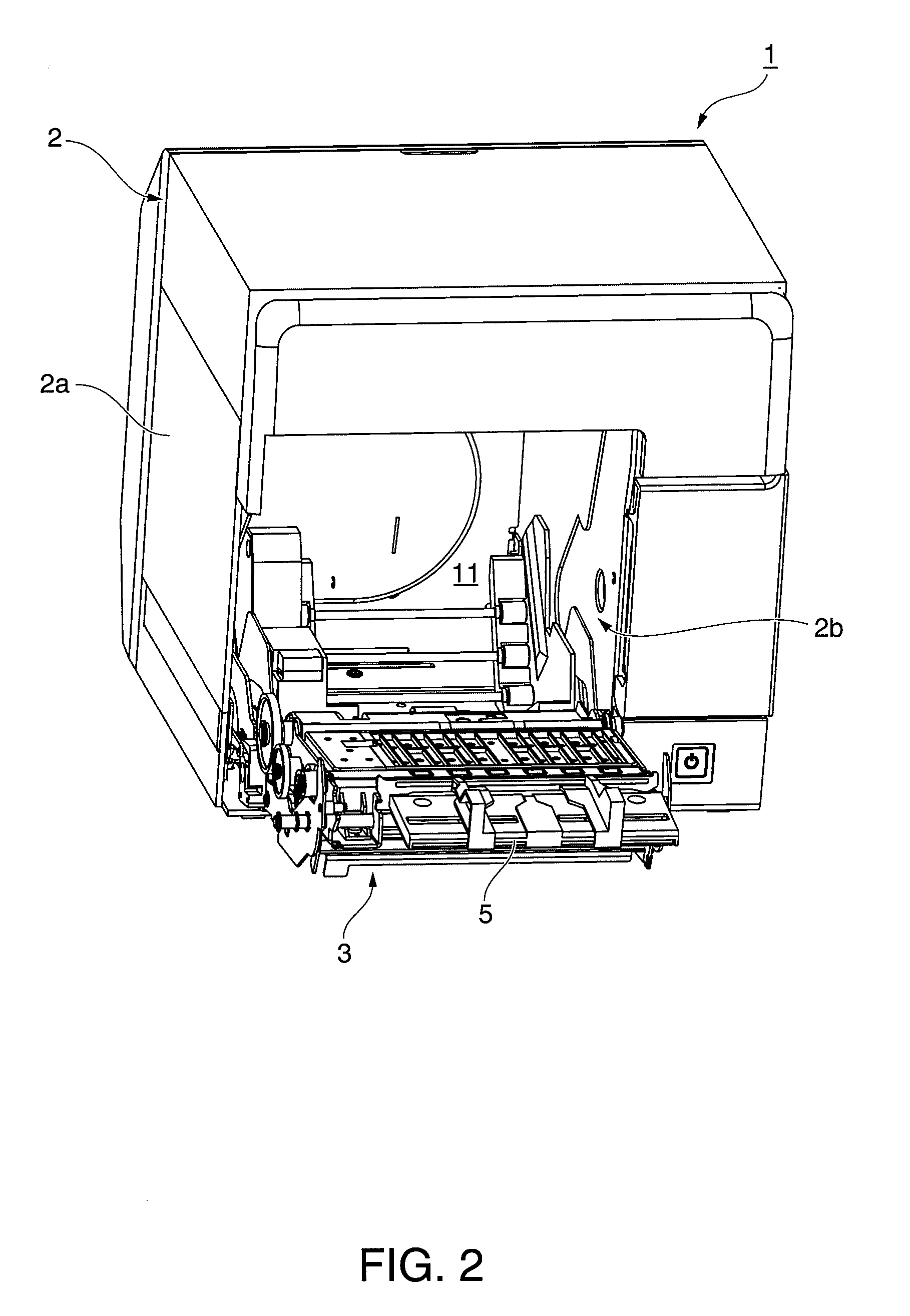Paper width detection method for a label printer, printing control method for a label printer, and a label printer
a detection method and label printer technology, applied in printing, typewriters, other printing apparatus, etc., can solve the problems of low light that is reflected back by the liner, detection errors, and difficult detection of the point where the reflectivity changes near the edge of the liner, so as to achieve the effect of determining the paper width of a recording medium more accurately
- Summary
- Abstract
- Description
- Claims
- Application Information
AI Technical Summary
Benefits of technology
Problems solved by technology
Method used
Image
Examples
Embodiment Construction
[0042]A label printer and a paper width detection method for the label printer according to preferred embodiments of the present invention are described below with reference to FIG. 1 to FIG. 8.
General Configuration
[0043]FIG. 1 is an oblique view showing an inkjet label printer according to a first embodiment of the invention. FIG. 2 is an oblique view of the label printer with the cover completely open.
[0044]The label printer 1 has a rectangular box-like body 2 and a cover 3 that opens and closes and is disposed to the front of the body 2. A paper exit 4 of a predetermined width is formed at the front of the outside case 2a part of the printer body 2. An exit guide 5 projects to the front from the bottom of the paper exit 4, and a cover opening lever 6 is disposed beside the exit guide 5. A rectangular opening 2b for loading and removing roll paper is formed in the outside case 2a below the exit guide 5 and cover opening lever 6, and this opening 2b is closed by the cover 3.
[0045]O...
PUM
 Login to View More
Login to View More Abstract
Description
Claims
Application Information
 Login to View More
Login to View More - R&D
- Intellectual Property
- Life Sciences
- Materials
- Tech Scout
- Unparalleled Data Quality
- Higher Quality Content
- 60% Fewer Hallucinations
Browse by: Latest US Patents, China's latest patents, Technical Efficacy Thesaurus, Application Domain, Technology Topic, Popular Technical Reports.
© 2025 PatSnap. All rights reserved.Legal|Privacy policy|Modern Slavery Act Transparency Statement|Sitemap|About US| Contact US: help@patsnap.com



